The Ultimate Guide to Choosing the Right Safety Boots for Your Job
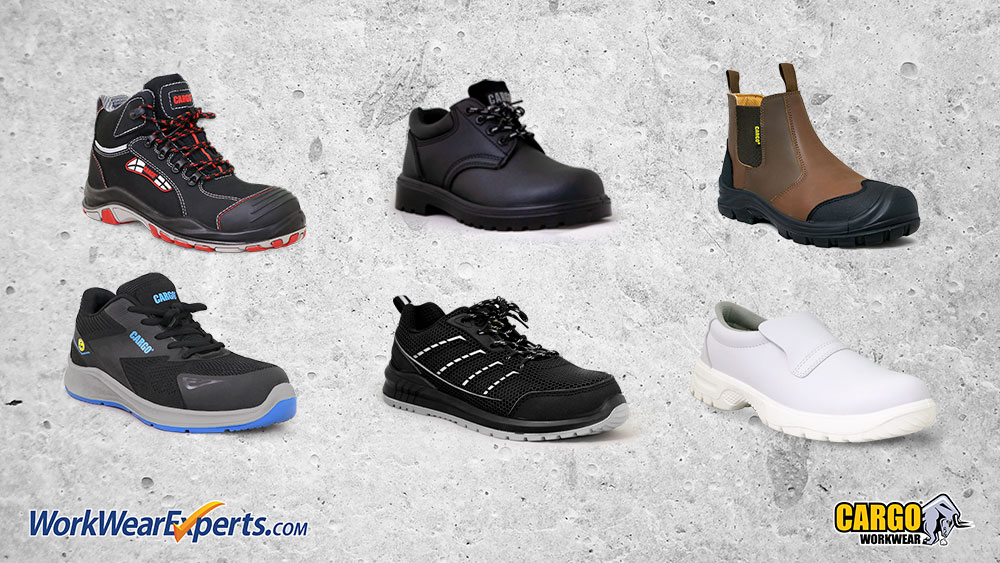
In many industries, safety boots are not just an optional piece of gear—they’re essential. From construction sites to warehouses, factories to outdoor work environments, these boots provide the necessary barrier between workers and potential hazards, keeping feet safe from injury and enhancing comfort on long shifts.
Each job comes with unique risks, and choosing the right safety boots can help prevent serious injuries from falling objects, punctures, slips, and exposure to harsh weather conditions.
However, safety boots are not all made equal. It’s crucial to consider three primary factors: comfort, protection, and durability. Each of these plays a vital role in determining the suitability of a boot for specific job roles:
- Comfort: Safety boots should support all-day wear, preventing fatigue and strain, particularly for roles that require extensive standing or walking.
- Protection: Different job environments demand specific protective features, such as steel toe caps, slip-resistant soles, and waterproofing, to safeguard against job-specific hazards.
- Durability: The material and construction of safety boots impact their ability to withstand tough conditions and frequent use, ensuring they remain effective over time.
This guide will walk you through everything you need to know to make an informed decision, ensuring you’re equipped with the right footwear for the demands of your job.
TABLE OF CONTENTS
- Understanding Safety Standards for Work Footwear
- Assessing Your Job Requirements: Which Safety Boots Are Right for You?
- Key Features to Look for in Safety Boots
- Comfort vs. Protection: Striking the Right Balance
- Materials Matter: Choosing the Best for Your Job
- Additional Considerations: Style, Weight, and Budget
Understanding Safety Standards for Work Footwear
Safety standards are essential in helping you select boots that truly offer the protection you need on the job. EN ISO 20345:2022 is the most current safety standard for work footwear, setting strict requirements to ensure all certified boots meet key safety and performance measures, including impact resistance, slip resistance, thermal properties, and ergonomic design.
Categories of Safety Footwear
EN ISO 20345:2022 categorises safety footwear based on materials, protective features, and suitability for different environments. The standard breaks down safety footwear into distinct classes and markings, each representing specific protective capabilities:
- Class I: Made from leather or similar materials (non-moulded).
- Class II: Fully moulded footwear, typically rubber or polymer-based.
- SBH: Hybrid footwear, combining elements of both Class I and Class II.
Each class is further defined by key categories and markings:
- SB (Safety Basic): Includes a toe cap that protects against 200 joules of impact and compression up to 15 kN.
- S1: Adds anti-static properties, energy absorption in the heel, and a closed heel.
- S2: Builds on S1 with added resistance to water penetration and absorption.
- S3: Adds a puncture-resistant midsole and a cleated outsole for enhanced grip, suitable for rough environments.
- S4 & S5: Fully polymeric boots with features like anti-static properties, a penetration-resistant midsole, and a cleated outsole.
- S6: Combines the features of S2 footwear with water resistance (WR), making them ideal for wet environments where additional waterproofing is required.
- S7: Builds on S3 footwear with the addition of water resistance (WR), providing robust protection in outdoor and high-moisture environments.
Additional Markings for Specific Safety Features
Footwear may also include additional safety features, such as:
- HRO (Heat-Resistant Outsole): Resists temperatures up to 300°C.
- FO (Fuel Oil Resistance): Protects against degradation from exposure to fuel oils.
- A (Anti-Static): Reduces static build-up, ideal for electronics or chemical environments.
- WR (Water-Resistant): Waterproof to protect in wet conditions.
- Slip Resistance (SRC): Now mandatory under EN ISO 20345:2022, ensuring footwear provides grip on slippery surfaces, tested with glycerine on ceramic tiles to simulate real-world conditions.
By meeting EN ISO 20345:2022, safety footwear ensures it can handle specific workplace risks, from preventing sharp object punctures to reducing slips and providing adequate insulation against heat and cold. With the addition of S6 and S7 categories, workers can select boots that align even more closely with the demands of their environment, ensuring both safety and comfort.
| Cargo Sneaker ESD Safety Trainer S1P SRC |
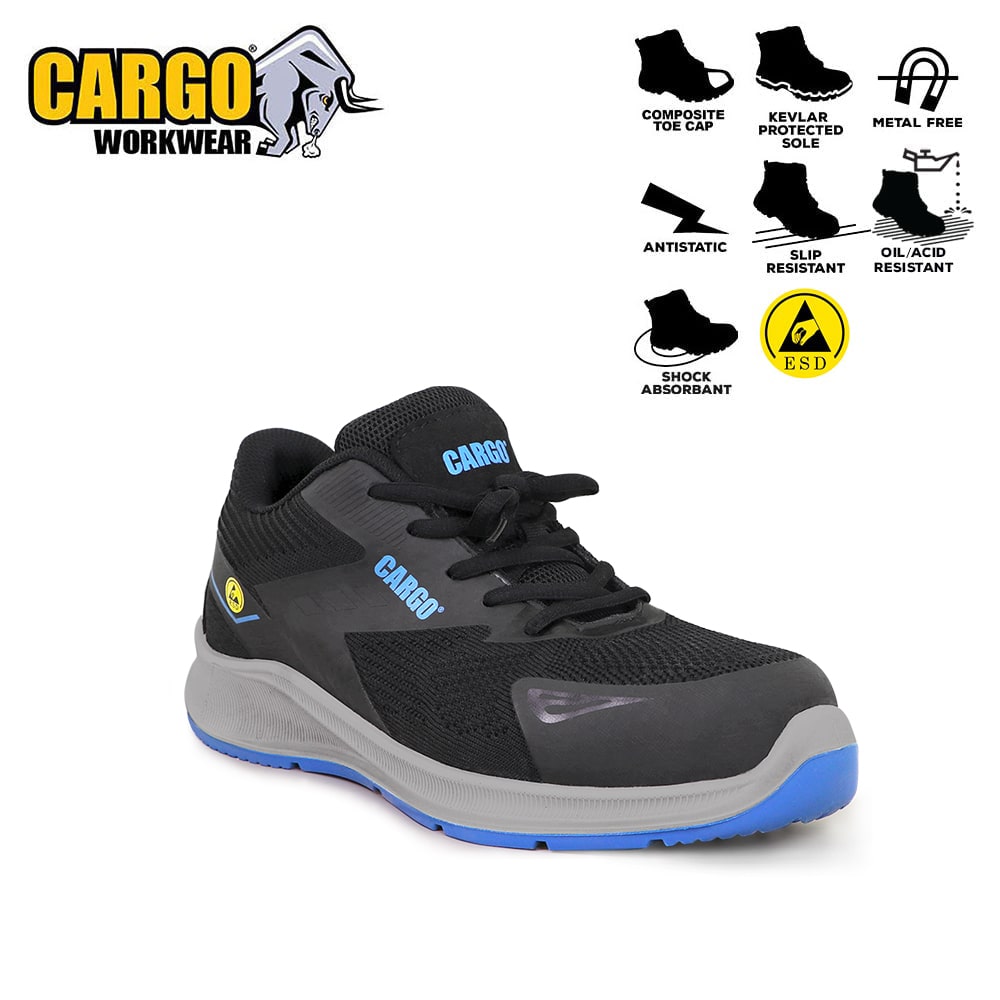 |
Learn more: Footwear Safety Standards: The Ultimate Guide To EN345 [Infographic]
Assessing Your Job Requirements: Which Safety Boots Are Right for You?
Selecting the right safety boots begins with understanding the specific hazards and demands of your job. Different work environments come with unique risks, from heavy falling objects in construction to slippery floors in warehouses. Identifying these hazards will help you choose safety boots with the right protection, comfort, and durability features for your role.
Identifying Hazards Specific to Your Role
Consider the daily risks in your work environment. Here are some common hazards and the corresponding features to look for:
- Heavy Objects & Impact Risks: For roles where falling or rolling objects are a concern (e.g., construction, manufacturing), boots with steel or composite toe caps (SB or S1) offer crucial impact protection.
- Sharp Objects & Puncture Risks: Jobs involving sharp debris or tools, such as construction or warehousing, require penetration-resistant midsoles (S3 or S5) to prevent injuries.
- Wet & Slippery Surfaces: Environments like food processing or warehousing may pose slip risks, so choose boots with high slip resistance (SRC) and water resistance (S2 or WR) to ensure solid footing.
- Electrical Hazards: For those working with electronics or in environments with electrical hazards, anti-static (A) or partially conductive (C) boots help prevent static build-up, while fully insulated boots offer electrical resistance.
- Extreme Temperatures: Cold storage facilities or hot industrial settings benefit from boots with thermal insulation (Cl for cold or HI for heat) to maintain comfort and safety in temperature extremes.
Types of Safety Boots by Job Sector
- Construction and Heavy Industry
- Recommended Features: Toe cap protection (S1 or S3), penetration-resistant midsoles, slip resistance, and waterproofing (WR).
- Boot Type: Durable boots with steel or composite toe caps and rugged outsoles for added grip on uneven surfaces.
- Manufacturing and Engineering
- Recommended Features: Anti-static properties, puncture resistance, slip resistance, and optional ankle protection (AN).
- Boot Type: Mid-rise boots with reinforced toe and heel areas, offering flexibility without compromising on safety.
- Warehousing and Logistics
- Recommended Features: Slip resistance (SRC), energy-absorbing heels, and anti-static properties.
- Boot Type: Lightweight boots or shoes for mobility, often with anti-slip soles and energy absorption for all-day comfort.
- Agriculture and Outdoor Work
- Recommended Features: Waterproofing, cut resistance (CR), and anti-slip properties.
- Boot Type: Waterproof and cleated outsole boots for handling rugged terrain, mud, and exposure to outdoor elements.
- Food Processing and Healthcare
- Recommended Features: Anti-slip (SRC), fuel oil resistance (FO), and water-resistant (WR).
- Boot Type: Easy-to-clean, slip-resistant footwear, often with hygienic and waterproof materials suitable for wet environments.
Choosing safety boots tailored to your role’s specific risks will improve both safety and comfort, reducing fatigue and enhancing protection in the areas you need it most. By matching job requirements to the right features, you can ensure that your footwear is as dependable as you are on the job.
| Cargo Quarryman Safety Boot S3 WRU SRC HRO |
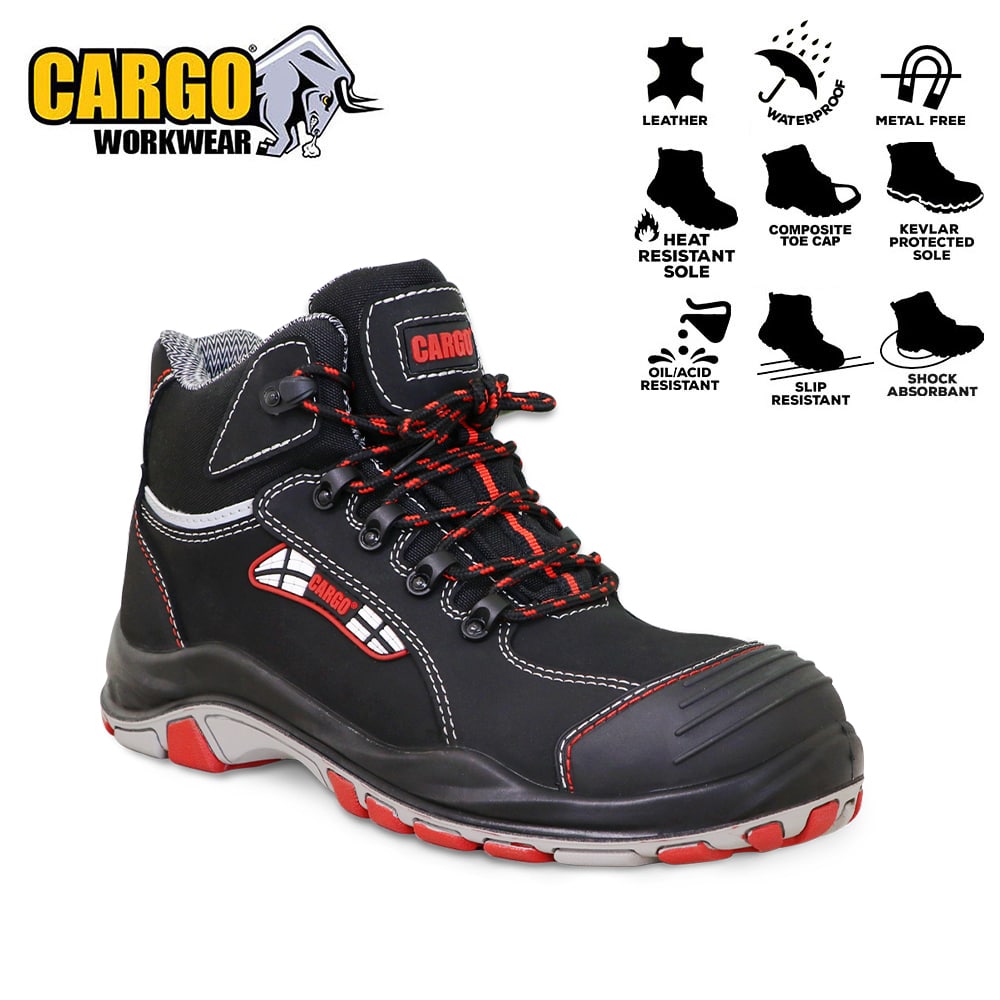 |
Key Features to Look for in Safety Boots
When choosing safety boots, it’s essential to consider the specific features that address your need for protection, comfort, and durability. Each of these factors plays a crucial role in ensuring your boots provide reliable protection, remain comfortable for long shifts, and withstand the demands of your work environment.
Protection: Essential Safety Features
- Toe Caps: Toe caps are a fundamental component of safety boots, designed to protect your toes from impact and compression injuries. Steel toe caps offer maximum protection against heavy objects, while composite toe caps provide similar protection with lighter weight and are non-metallic, making them ideal for environments with metal detectors.
- Puncture-Resistant Soles: For roles where sharp objects are a hazard, puncture-resistant midsoles are essential. These soles, often made of metal or tough composite materials, help prevent sharp items from piercing through the boot, offering vital protection on construction sites or in environments with sharp debris.
- Waterproofing: Jobs in wet or outdoor environments benefit from boots with waterproof or water-resistant properties (WR or S2/S3). Waterproof boots keep feet dry, preventing discomfort and reducing the risk of blisters or other foot issues caused by prolonged exposure to moisture.
Comfort: Features That Support Long Hours
- Cushioned Insoles: Long shifts can take a toll on your feet, especially if you’re constantly on the move. Boots with cushioned insoles absorb shock and reduce the impact on your feet and legs, enhancing comfort and reducing fatigue.
- Flexibility: For roles requiring frequent movement or bending, flexible boots are a must. Materials like leather and certain synthetics offer flexibility without compromising protection, allowing ease of movement while maintaining structural integrity.
- Ventilation: Good ventilation prevents heat build-up and reduces sweat, keeping feet cool and comfortable throughout the day. Look for boots with breathable linings or mesh panels, especially if you work in warm conditions or indoors.
Durability: Materials and Construction for Long-Lasting Wear
- Quality Materials: Durability often comes down to the choice of materials. Full-grain leather is a popular choice for its strength and resistance to wear and tear, while rubber and polyurethane provide excellent durability for outsole construction, offering abrasion resistance and grip.
- Reinforced Stitching and Construction: The way boots are made significantly affects their lifespan. Reinforced stitching, durable eyelets, and high-quality bonding ensure boots can withstand frequent use and exposure to challenging conditions without falling apart.
- Outsole Strength: Durable outsoles protect the integrity of the boots over time. Slip-resistant, abrasion-resistant outsoles made from rubber or polyurethane can handle rough surfaces, extending the boot’s life and providing reliable traction across various terrains.
By prioritising these key features, you can choose safety boots that not only protect but also support comfort and longevity, ensuring they meet the unique demands of your work environment.
| Cargo Dealer Slip-On Safety Boot |
 |
Comfort vs. Protection: Striking the Right Balance
Finding the right balance between protection and comfort is essential when choosing safety boots or safety shoes, especially for long shifts. While it’s tempting to prioritise either protection or comfort, selecting boots that offer both is crucial for maintaining productivity, reducing fatigue, and ensuring safety throughout the workday.
The Importance of Balancing Protection with Comfort
Safety boots must protect your feet, but if they’re uncomfortable, they can lead to fatigue, strain, and long-term foot issues that impact work performance. Choosing boots that offer both essential safety features, like toe caps and puncture-resistant soles, along with comfort elements such as cushioned insoles and flexible materials, is key.
For roles requiring long periods of standing or walking, cushioning and shock absorption reduce strain, while breathable linings and supportive heels help maintain comfort and stability throughout the day.
Tips for Ensuring Fit and Reducing Fatigue
- Choose the Right Size: Proper fit is essential to ensure both safety and comfort. Your toes should have room to move, but the boot should fit snugly around your heel to prevent slipping and blisters. Consider trying on boots with the same type of socks you wear on the job for an accurate fit.
- Opt for Cushioned Insoles: Many safety boots come with removable insoles, allowing you to add custom cushioning if needed. Cushioned insoles not only improve comfort but also help absorb shock, which can reduce fatigue and improve endurance throughout the day.
- Consider Weight: Heavy boots can add strain over long shifts, especially in roles that require extensive movement. If you don’t need heavy-duty features, consider lightweight options that offer sufficient protection without weighing you down.
- Break Them In: New boots can feel stiff initially, so wear them around for a few hours each day before starting full shifts. Breaking in your boots allows the material to soften and mould to your foot, improving both comfort and fit.
- Invest in Breathable and Flexible Materials: For those working in warm environments or moving frequently, breathable materials help reduce sweat, while flexibility enhances comfort during movement. Leather and mesh panels are ideal for combining breathability with durability.
Balancing protection with comfort doesn’t mean sacrificing one for the other. With the right fit, cushioned insoles, and breathable materials, you can reduce fatigue while staying protected, making your workday safer and more comfortable from start to finish.
| Cargo Kelly Slip On Safety Shoe S2 SRC |
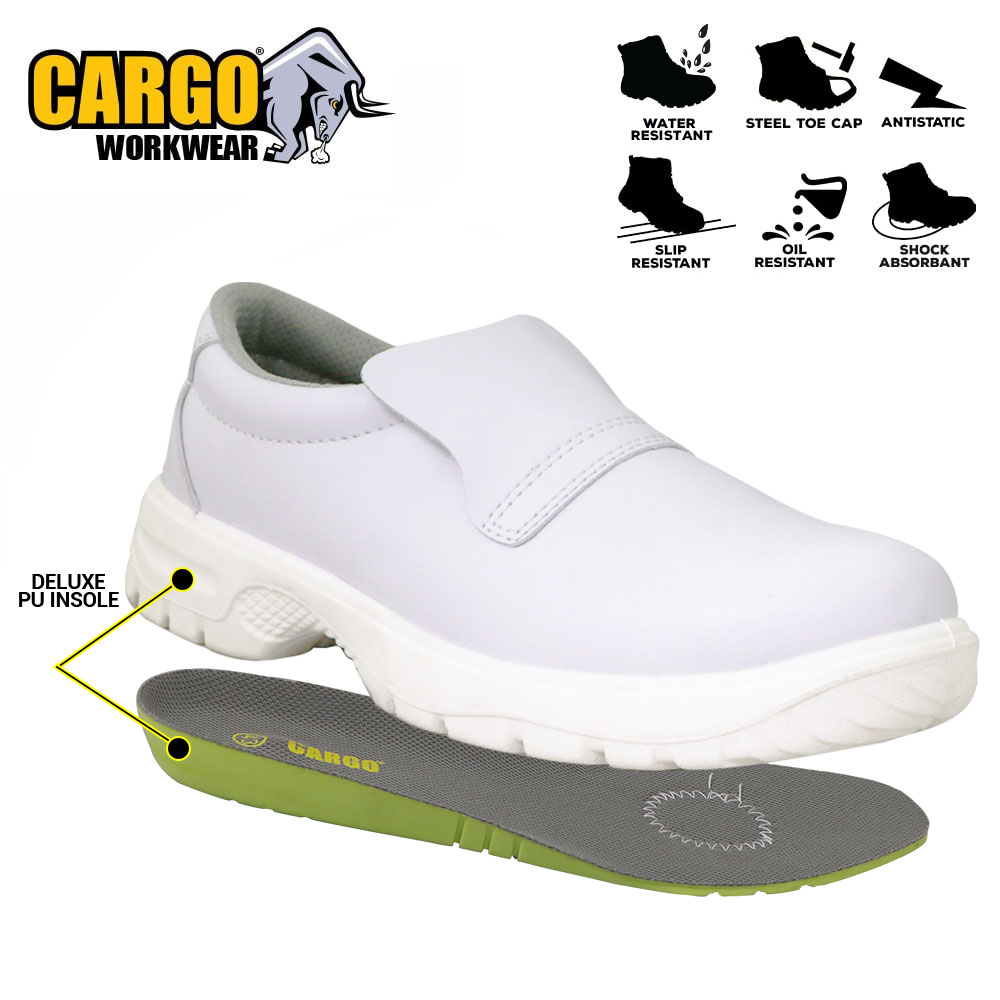 |
Learn more: How to Choose Lightweight Safety Shoes for Long Shifts
Materials Matter: Choosing the Best for Your Job
The material of your safety boots can significantly affect their performance and comfort, especially in specific work environments. Understanding the pros and cons of leather, rubber, and synthetic materials can help you select boots that match your job's demands.
Leather, Rubber, and Synthetic Materials: Pros and Cons
- Leather: Known for durability and flexibility, leather offers excellent protection and adapts well to various environments. However, it requires maintenance to remain water-resistant and may be less breathable in warmer conditions.
- Rubber: Fully waterproof and resistant to many chemicals, rubber boots are ideal for wet or hazardous environments. Their heavy-duty nature can make them less breathable and heavier than other materials, so they may not suit roles requiring extensive movement.
- Synthetic Materials: Often lightweight and breathable, synthetics like mesh or microfiber are comfortable for long shifts, especially in warm climates. However, they may lack the durability and protection of leather or rubber, making them better for low-risk, indoor environments.
Breathability vs. Waterproofing
- Breathability: Boots with breathable linings or mesh panels prevent overheating and reduce moisture build-up, ideal for indoor or warm settings.
- Waterproofing: Essential for outdoor or wet environments, waterproof boots keep feet dry and protect against prolonged exposure to moisture. However, they may sacrifice some breathability, so it’s important to balance based on your work environment.
Choosing the right material helps ensure your boots are both functional and comfortable, tailored to the specific challenges of your job.
Additional Considerations: Style, Weight, and Budget
When selecting safety boots, it’s essential to consider style, weight, and budget to ensure ease of wear and overall suitability for your role.
- Style (Lace-Up vs. Slip-On): Lace-up boots provide a secure fit and are ideal for high-activity roles, while slip-ons offer convenience for jobs requiring frequent boot removal or in environments where laces may get caught.
- Weight: Lightweight boots are ideal for roles needing high mobility, reducing fatigue over long shifts. Look for composite or synthetic materials that balance protection with a lighter build.
- Budget: Aim to find boots that fit your budget without sacrificing critical safety and comfort features. Investing in quality may provide better durability and overall value, keeping you safer and more comfortable on the job.
These considerations ensure your safety boots not only protect but also suit your work needs and budget.
| Cargo Dean Leather Safety Shoe S3 SRC |
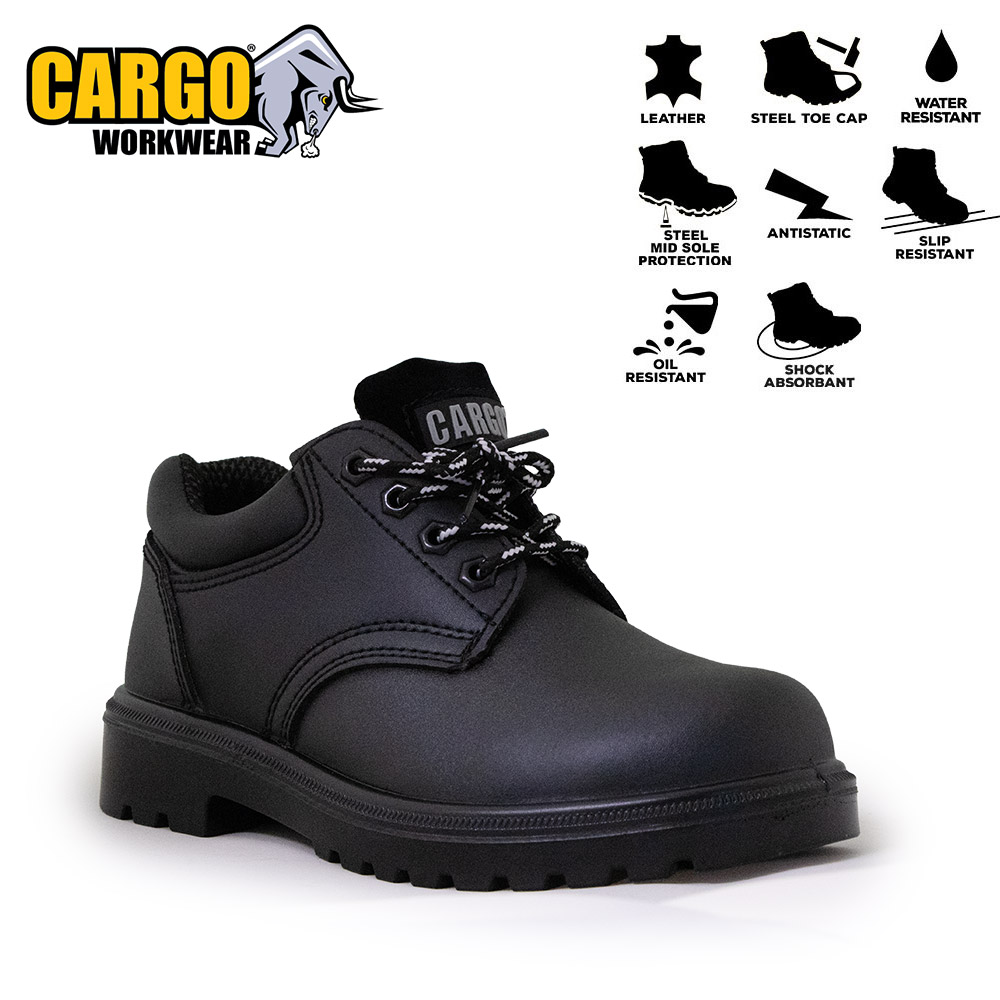 |
Conclusion
Choosing the right safety boots is about finding the perfect balance between protection, comfort, and durability. By understanding safety standards, identifying job-specific hazards, and prioritising essential features, you can ensure your boots are up to the demands of your role.
A thoughtful investment in quality safety footwear reduces the risk of injury, enhances comfort, and boosts your productivity across long shifts.
Ready to find your perfect pair? Explore our extensive range of safety boots at WorkWear Experts and choose the best fit for your job requirements and comfort needs.
Footwear Safety Standards: The Ultimate Guide To EN345 [Infographic]
How to Choose Lightweight Safety Shoes for Long Shifts
Your email address cannot be published. Required fields are marked*
